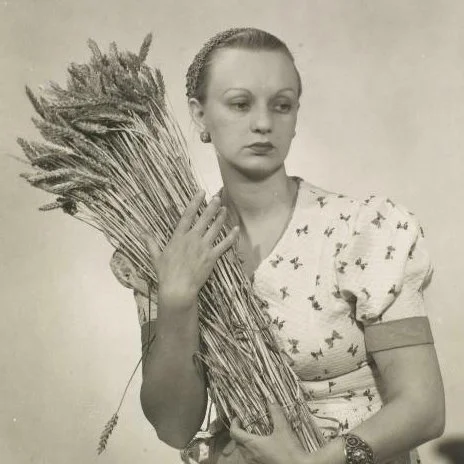Notes on Ithell Colquhoun
Ithell Colquhoun by Man Ray, around 1932
I am a latecomer to the Ithell Colquhoun party, perhaps, but I still feel as if I’ve discovered her or am in the process of discovering her for the first time all by myself, and she’s my secret. But I’m still working out how to pronounce her name. Colquhoun was a painter and writer and though associated with surrealism and the occult, her love of nature, creative spirit and widely esoteric writings embraced everything from Celtic spirituality to Buddhism and yoga.
Ithell Colquhoun (1906-1988) was born in India to British parents, coming to England at a young age, eventually studying art at London’s Slade School of Art. Whilst her early paintings were of largely religious and classical subjects, Colquhoun soon began to show an interest in the occult and more esoteric subjects, publishing her first article, The Prose of Alchemy, in 1930. She travelled for several years after leaving the Slade and discovered surrealism in Paris.
By 1936 Colquhoun had two solo exhibitions, in London and Cheltenham, which show the influence of Salvador Dali. Within a few years she had a joint exhibition with Roland Penrose and met André Breton and other surrealists. But by 1940 she was banned by the British Surrealist Group, alongside other female surrealists.
Scylla, 1938
If 1940 was a low point for Colquohoun, she was soon embracing many other esoteric traditions, and she still regarded herself as a surrealist all her life (she also briefly married, in 1943, the leader of the British Surrealist Group, Toni del Renzio). Colquohoun would continue to use surrealist techniques, especially automatism, for her art and writing for the rest of her career.
From 1947 she rented a studio in Paul, near Penzance. By the 1950s Colquohoun was concentrating on her writing. Her wonderful travelogue of her time looking for a studio in Lamorna, a lovely village nestled in a lush valley in Penwith, is called The Living Stones, and was published in 1957. The area is steeped in myth and legend, with ancient sacred places including holy wells and circles of standing stones in fields. In the early 20th century the village became a famous artist colony.
The area was perfect was Colquohoun, and in The Living Stones she travels around Cornwall exploring its past through its landscape and trying to escape the modern world. Plants, trees and rocks are all alive to her, and Cornwall’s mysterious and supernatural past, its myth and folklore, obviously have great appeal for Colquohoun. The book is also dotted with amusing anecdotes, country gossip and the difficulty of finding a bus in Cornwall (some things never change).
Attributes of the Moon, 1947
Thankfully female artists are nowadays getting the recognition they always deserved (see also fellow female surrealists such as Leonora Carrington, Dorothea Tanning and Lee Miller). The male surrealists always had a problem with women – in art, they worshipped them, in life, they feared them.
Ithell Colquhoun’s journey, like Lee Miller’s, is finally being fully appreciated. Now dubbed the ‘high priestess of British surrealism’, her deep love of nature and her spiritual journey – which echoes other female artists’ such as Hilma af Klint’s – from surrealism and animism to alchemy, culminating with her ordination as a Priestess of Isis, and expressed itself in painting, poetry, fiction, travel writing and ritual, are fascinating and timely.
I can’t wait for Ithell Colquhoun: Between Worlds, 1 February - 5 May 2025, at the Tate St Ives, the first major exhibition of the visionary artist.


